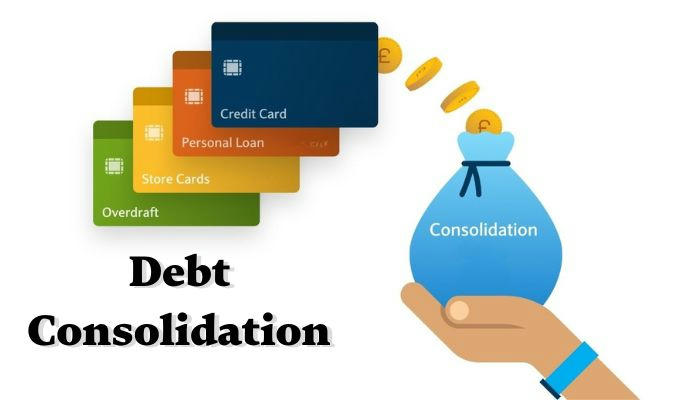Should You Refinance or Consolidate Your Credit Card Debt?
Carrying a credit card balance from month to month can quickly become expensive. According to the Federal Reserve, the average APR on credit cards was over 20% in early 2025. For individuals looking to manage high-interest debt, two of the most common strategies are refinancing and consolidation. While both aim to reduce financial pressure, they operate differently and are suited to different situations.
This guide explains each method, compares their benefits and trade-offs, and helps determine which one might work best based on your credit profile and repayment goals.
What Is Credit Card Refinancing?

Refinancing, in this context, means transferring your credit card balance to a new credit card that offers a promotional low or 0% APR for a limited time—typically between 12 and 18 months.
When It Works Well
Refinancing is most effective when:
Your total debt is under $10,000
You have a credit score of 680 or higher
You can realistically pay off most of the balance during the introductory period
According to Experian, consumers with higher credit scores are more likely to qualify for 0% APR balance transfer cards, which can significantly reduce interest costs.
📊 Example: A $6,000 balance at 0% APR for 15 months, with a $200 monthly payment, would incur no interest. In contrast, at a 21% APR, that same balance would accumulate over $950 in interest over 15 months.
Refinancing Pitfalls to Watch
Transfer fees: Usually 3–5% of the amount transferred
High rates after promotion ends: Could exceed 20–25%
Hard credit check: May cause a temporary drop in your score
Spending temptation: New available credit can encourage additional use
What Is Debt Consolidation?

Debt consolidation involves taking out a personal loan and using it to repay multiple credit card balances. The loan typically comes with a fixed interest rate and a set repayment term, such as 36 or 60 months.
This turns multiple variable-interest debts into a single, predictable monthly payment, which can improve budgeting and reduce stress.
When Consolidation May Help
You owe over $10,000 on multiple cards
Your credit score is above 620 (minimum for most lenders)
You prefer fixed payments and a defined payoff timeline
According to LendingTree, personal loan interest rates in 2025 average between 10% and 17%, though rates vary widely depending on credit history, income, and loan term.
Consolidation Considerations
Origination fees: Some lenders charge 1–6% upfront
Loan denial: Approval isn’t guaranteed for low-credit applicants
Extended repayment: Lower monthly payments could result in more interest paid over time if the term is too long
Side-by-Side Comparison
| Feature | Refinancing (Balance Transfer) | Consolidation (Personal Loan) |
|---|---|---|
| Primary Tool | Credit card | Fixed-term loan |
| Ideal Debt Size | Under $10,000 | $10,000 and up |
| Interest Rate | Intro 0% APR, then variable | Fixed (usually lower than credit cards) |
| Credit Requirement | Good to excellent (680+) | Fair to good (620+) |
| Monthly Payment Type | Flexible (minimum due varies) | Fixed |
| Timeline | Short-term (12–18 months) | Long-term (1–5 years) |
| Extra Costs | Balance transfer fee | Possible origination fee |
| Credit Score Impact | Hard inquiry, temporary dip | Hard inquiry, new account impact |
Psychological Impact and Behavior Change
Beyond math and interest rates, both options can have emotional and behavioral effects:
Refinancing can give the illusion of “wiped out debt,” which may lead to new spending if old habits persist.
Consolidation can reduce financial anxiety by simplifying payments and creating a clear end date—but only if the borrower avoids accumulating new debt.
The Consumer Financial Protection Bureau (CFPB) recommends tracking all debt balances regularly and using auto-payments to avoid late fees and credit damage.
Tips to Maximize the Benefits
Whether choosing to refinance or consolidate, the following strategies help improve outcomes:
Stick to a repayment plan and avoid adding new card balances
Set payment reminders or automate payments to stay on schedule
Track credit score changes monthly through free credit monitoring services
Avoid applying for other credit while paying off consolidated or refinanced debt
Which Option Is Right for You?
Ask these key questions before deciding:
Can you realistically pay off the balance in 12–18 months? If yes → Refinancing may be better
Do you have multiple cards with varying rates and prefer one fixed payment? If yes → Consolidation may be more practical
Is your credit score below 620? → You may need to improve your credit before either strategy works well
💡 Reminder: Always review the APR, loan term, total repayment cost, and any associated fees before signing up.
Final Thought
Managing credit card debt requires not only the right tools, but also the right mindset. Refinancing and consolidation are both valid ways to regain control—if used with discipline and planning.
With the right structure, either strategy can help reduce interest, simplify your financial life, and provide a more manageable path to becoming debt-free.
